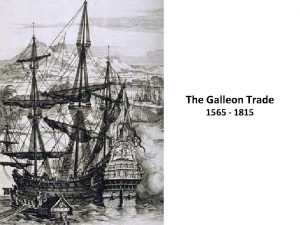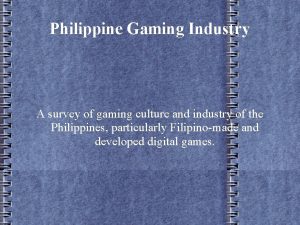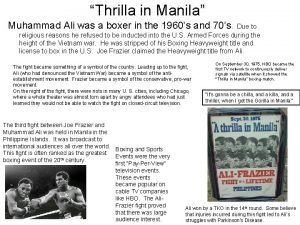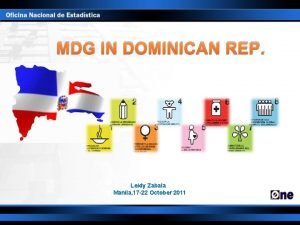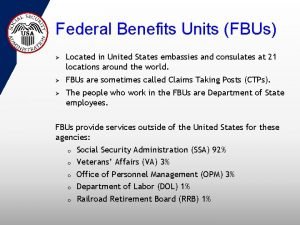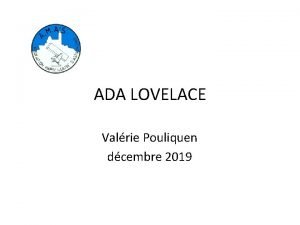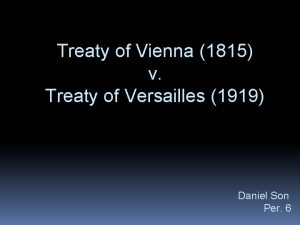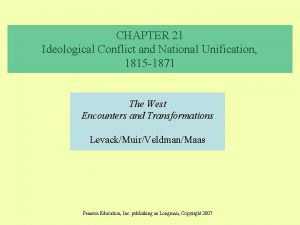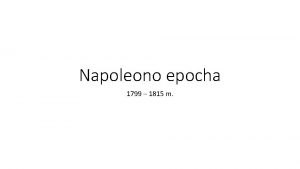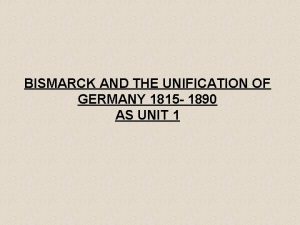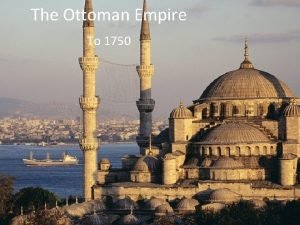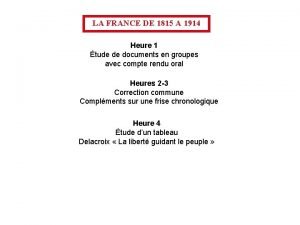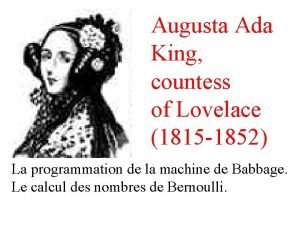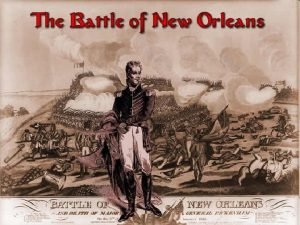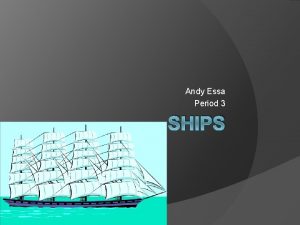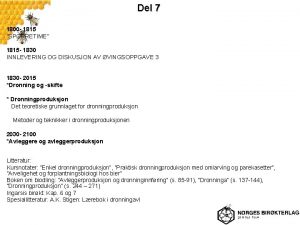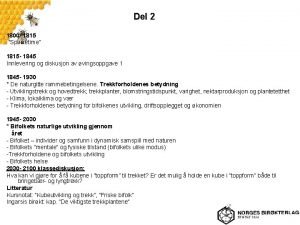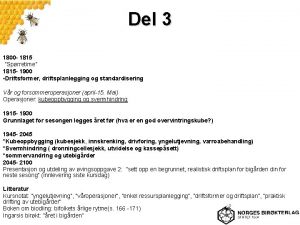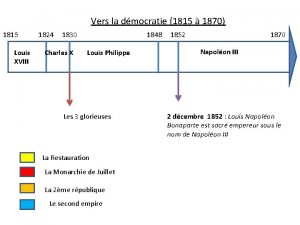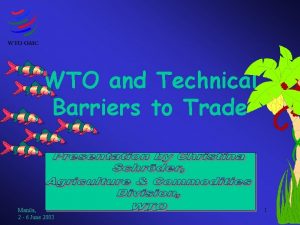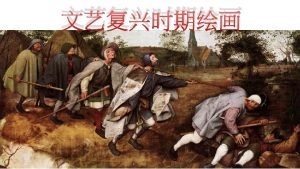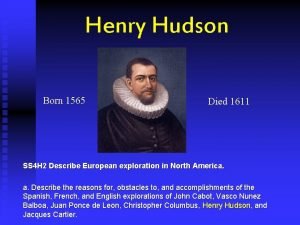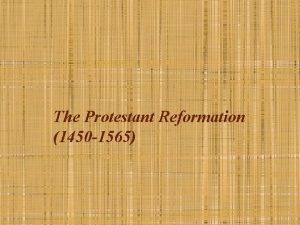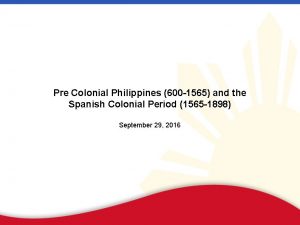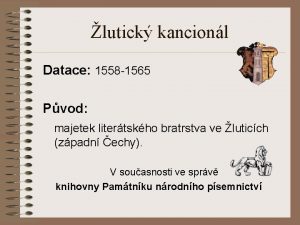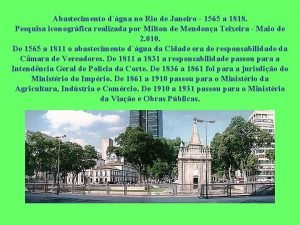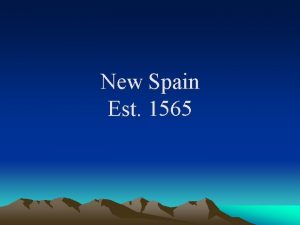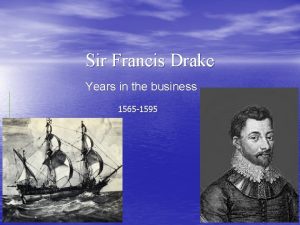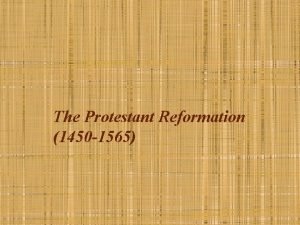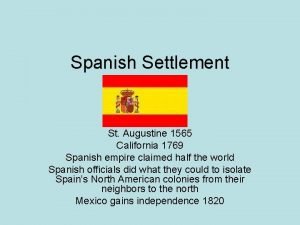The Galleon Trade 1565 1815 The Manila Galleon
























- Slides: 24

The Galleon Trade 1565 - 1815

The Manila Galleon or “Nap de China” was the first route to sail through the Pacific Ocean as a link between Asia and America. Through this route, and after having colonized Philippines, Spain controlled this commercial route for almost three centuries, uniting Seville, Philippines and Mexico. • The Manila-Acapulco galleon trade began when the Augustinian friar, Andrés de Urdaneta, sailing in convoy under Miguel López de Legazpi, discovered a return route from Cebu City to Mexico in 1565. • The galleon trade started in the same year; the first galleon sailed from Cebu. Until 1593 there were two Philippine cities involved in the trade: Cebu and Manila. • The trade served as the main source of income for the Philippines colony until early 1800’s. • Although the trade was officially ended in 1815 due to the Mexican War of Independence, the last of the galleons set sail in 1820. Andres de Urdaneta

Known as the “longest shipping line in history, ” a total of 110 galleons were used in the trade. 102 of the galleons were built in the Philippines while the other 8 in Mexico. 2 were built in Cebu, some in Leyte, but most of the galleons were constructed in Cavite. The galleons were the largest class of ships known to have been built anywhere up to that time. In the 16 th century, they averaged from 1, 700 to 2, 000 tons, were built of Philippine hardwoods and could carry a thousand passengers. The Concepción, wrecked in 1638, was 43 to 49 m (140– 160 feet) long and displacing some 2, 000 tons. The Santísima Trinidad was 51. 5 m long. right: shipyard in Cavite

Main Trade Routes of the Global Economy controlled by Spain and Portugal How the Philippines was connected to Spain / Europe: Manila – Acapulco, Mexico; Veracruz, Mexico – Seville, Spain How Asia was connected to Manila: China – Manila (Sampan Trade); Portuguese Macau - Manila India, Persia, Thailand, Vietnam, Cambodia, etc. – Manila How Africa was connected to the Spanish Empire: African trading ports – Portuguese Brazil; Portuguese Brazil – Trading ports in Spanish America

China: silk, porcelain, gemstones, ivory, jade, gold, other Chinese goods Japan: silverware, silk, other Japanese goods Spice Islands (Moluccas): nutmeg, cloves, mace, pepper and other spices Sampan trade Manila Other parts of Southeast Asia: porcelain from Thailand Vietnam, textiles, sandalwood, ivory, pepper and other spices India and Persia: Jewels, carpets, damasks, spices, other goods Philippines: hardwoods, textiles, bird’s nests, spices, pearls, mangoes, tamarind Acapulco, Mexico (Nueva España)

Africa: coffee, ivory Europe: Christianity, language, immigrants, priests, wines, olive oil, textiles, luxury products and other goods Manila Acapulco, Mexico Americas: maize and Mexican silver currency (dollars) from Mexico, immigrants, priests, silver from Bolivia, gold, horses, cows, tobacco, sugarcane, pineapples, vanilla, cacao; other plant products such as some flowering plants, orchids, and fruit trees like guavas, papayas, apples; vegetables such as eggplants, bitter gourd, squash, sayote, cigarillas, etc. Root crops such as potatoes and peanuts from Peru, carrots, sweet potato and cassava (manioc)

Economy • The Manila-Acapulco Galleon Trade was the main source of income for the colony during its early years. Service was inaugurated in 1565 and continued into the early 19 th century. • The Galleon trade brought silver from New Spain and silk from China by way of Manila. This way, the Philippines earned its income through buy and sell - that is, they bought silk from China for resale to New Spain and then bought American silver for resale to China.

• The trade was very prosperous. But It neglected the development of the colony's local industries which affected the Indios since agriculture was their main source of income. In addition, the building and operation of galleons put too much burden on the colonists' annual polo y servicio, resulted in cultural and commercial exchanges between Asia and the Americas that led to the introduction of new crops and animals to the Philippines notably tobacco that gave the colony its first real income which benefit extended to the common Indio. • The trade lasted for over two hundred years, and ceased in 1821 with the secession of American colonies from Spain.

Royal Society of Friends of the Country • Jose de Basco y Vargas, formally established the Real Sociedad Economica de Amigos del Pais composed of leading men in business, industry and profession. • The society was tasked to explore and exploit the island's natural bounties. • The society led to the creation of Plan General Economico of Basco which implemented the monopolies on the areca nut, tobacco, spirited liquors and explosives.

Royal Society of Friends of the Country • It offered local and foreign scholarships and training grants in agriculture and established an academy of design. • It was also credited to the carabao ban of 1782, the formation of the silversmiths and gold beaters guild and the construction of the first papermill in the Philippines in 1825. • It was introduced on 1780, vanished temporarily on 1787 -1819, 18201822 and 1875 -1822 and ceased to exist in the middle of the 1890 s.

Royal Company of the Philippines • March 10, 1785, Charles III created the Royal Philippine Company with a 25 year charter. • It was granted exclusive monopoly of bringing to Manila, Philippines; Chinese and Indian goods and shipping them directly to Spain via the Cape of Good Hope. • It was stiffly objected by the Dutch and English who saw it as a direct attack on their trade of Asian goods. • It was also vehemently opposed by the traders of the Galleon trade who saw it as competition. This gradually resulted into the death of both institutions: The Royal Philippine Company in 1814 and the Galleon trade in 1815.

Taxation • To support the colony, several forms of taxes and monopolies were imposed. • The buwis (tribute), which could be paid in cash or kind (tobacco, chickens, produce, gold, blankets, cotton, rice, etc. , depending on the region of the country), was initially was fixed at 8 reales (one real being 12. 5 centavos) and later increased to 15 reales, apportioned as follows: ten reales buwis, one real diezmos prediales (tithes), one real to the town community chest, one real sanctorum tax, and three reales for church support.

Taxation • The buwis (tribute), which could be paid in cash or kind (tobacco, chickens, produce, gold, blankets, cotton, rice, etc. , depending on the region of the country), was initially was fixed at 8 reales (one real being 12. 5 centavos) and later increased to 15 reales, apportioned as follows: ten reales buwis, one real diezmos prediales (tithes), one real to the town community chest, one real sanctorum tax, and three reales for church support • Also collected were the bandalâ (from the Tagalog word mandalâ, a round stack of rice stalks to be threshed), an annual enforced sale and requisitioning of goods such as rice. • Custom duties and income tax were also collected. By 1884, the tribute was replaced by the Cedula personal, wherein colonists were required to pay for personal identification. Everyone over the age of 18 was obliged to pay.

Forced Labor (Polo y servicio) • The system of forced labor otherwise known as polo y servicio evolved within the framework of the encomienda system, introduced into the South American colonies by the Conquistadores and Catholic priests who accompanied them. • Polo y servicio is the forced labor for 40 days of men ranging from 16 to 60 years of age who were obligated to give personal services to community projects. One could be exempted from polo by paying the falla (corruption of the Spanish Falta, meaning "absence"), a daily fine of one and a half real. • In 1884, labor was reduced to 15 days. The polo system was patterned after the Mexican repartimento, selection forced labor.

A three-tiered economy emerged in the Philippines • First economy: characterized by monopoly – Spaniards who controlled and benefitted from the galleon trade in Manila • Second economy: dominated by Chinese and Chinese mestizos; characterized by retail and redistribution of goods bought at wholesale from the galleons; • Third economy: or native economy; characterized by small enterprises and subsistence agriculture

Effects of the Galleon Trade • The Philippines was drawn to what is now called the first world economy of modern times • Manila became the most important city in Asia in the 1600’s; other competing cities emerged in the 1700’s • The galleons became the means by which Hispanic culture was brought to the Philippines; • Cultural exchange between Spanish America and the Philippines; the Philippines was integrated into the Hispano-world; migration between the Philippines and the rest of the empire

Effects of the Galleon Trade • Because up to 80% of the crews manning the galleons were Philippine natives, Filipinos eventually became known as Asia’s ablest seamen. • Since most of the galleons were built in the Philippines, the tradition of shipbuilding in the islands, already present before the Spaniards came, was continued although modified. Filipinos became known as great shipbuilders. • Growth of the Chinese and Chinesemestizo communities in the Philippines • Introduction of Mexican peso into Asia; the Philippine peso was derived from it

Introduction of plant products and animals from the Americas to the Philippines • Because it was the main economic activity that sustained the Philippine colony for 250 years, the massive exploitation of natives in plantations and mines that happened in the America did not occur in the Philippines until the galleon trade was abandoned in early 1800’s • But…Since Manila was the only city opened to the trade, commerce in other port cities in the Philippines declined; Cebu, once a vibrant commercial entrepot linked to other ports in Asia, was reduced to a settlement the size of a small town • Since Manila only functioned as a transshipment point and commerce in other parts of the islands was discouraged, no genuine industries that inspired commercial and technological innovations among natives emerged; natives therefore became indolent

Introduction of plant products and animals from the Americas to the Philippines • Abuse of native laborers and seamen in shipyards and in the ships • Profits in the trade were monopolized by Spaniards in Manila • Manila and other parts of the Philippines became an attractive target for privateers and other imperial powers: in 1574 the Chinese pirate , Limahong, attacked Manila; in 1600 the Dutch blockaded the Manila galleons; in 1610, 1617, 1625, 1648 the Dutch attacked the Philippines; from 1762 -64, the British occupied Manila.

The Sampan Trade • Because direct trade with Spanish port cities in the Americas was prohibited, Chinese traders did commerce with Spaniards in Manila. This trade complimented the galleon trade and became known as the Sampan Trade. It is named after the kind of ships – sampan (Chinese junks) – used by Chinese merchants. • Attracted to the commercial prospects offered by the trade with the Spanish, a Chinese community steadily grew in Manila and other cities.

The Sampan Trade • Since most of the Chinese who migrated to the Philippine colony were males, intermarriages between natives and Chinese occurred. The mestizo-Chinese were disconnected from their Chinese heritage because they lived in Hispanized households and given their own mestizo district. In times of conflict they tended to ally with themselves with the Spanish. • Coexistence between the Chinese and Spaniards was marked by distrust. Sometimes it resulted to rebellions which resulted to massacres of Chinese residents in Manila.

DEVELOPMENT OF TRADE MERCANTILISM Mercantilism - colonies existed for the benefit of mother country and source of cheap materials then shipped to mother country to be turned into finished goods and products then shipped back to colonies and sell them to higher prices. Profit goes back to mother country. Colonies should provide markets for manufactured goods and sources of raw materials. The crown or state is heavily involved in regulating the economy. CAPITALISM Capitalisminvestors bought means of production (machines, materials, land, buildings etc) then hire labor to create products with added value then sell them to consumers to raise industrial profit. Industries and banks dominate the trade. MONOPOLY Monopoly capitalism- a capitalist system typified by trade monopolies in the hands of a few people. FREE TRADE Neo-liberalism- it’s a belief in the free markets. Corporate power, financial globalization, unregulated, ruthless capitalism. Margaret Thatcher, PM of England US President Ronald Reagan champions Neo-liberalism. They fought trade unions, destroyed market regulations, forced neoliberal doctrines on developing countries using the International Monetary Fund or the IMF. Developing countries must liberalized their economies. No more loans from the IMF. Diplomatic isolation. War and invasion. Poor countries had to privatize state resources. Lower corporate tax. Open up their labor to the West. Corporations benefit cheap labour. Western countries get richer. Neo-liberal hegemony. The rich gets richer. The poor gets poorer.

Photos from the internet http: //www. probertencyclopaedia. com/j/Galleon. jpg http: //en. wikipedia. org/wiki/File: 16 th_century_Portuguese_Spanish_trade_routes. png http: //en. wikipedia. org/wiki/File: Urdaneta_marinela_txikia. jpg http: //bustedracquet. us/ESW/Images/philippine_sampan. jpg http: //fourriverscharter. org/projects/Inventions/images/china_porcelain 1. jpg http: //media-2. web. britannica. com/eb-media/02/34802 -004 -67 C 8 E 08 E. jpg http: //www. boomerdog. com/images/jewels. jpg http: //www. goldcobs. com/luzcoinpics/luzcoin 4 M. JPG http: //www. dragonagro. com/Wimage/Vanilla%20 planifolia. jpg http: //www. goldcobs. com/luzcoinpics/Lima 1699 R 8 pil. JPG http: //www. metmuseum. org/toah/images/h 2_64. 172 -. 174. jpg http: //3. bp. blogspot. com/_5 YUVSXl. WLDk/SKEC 1 a. MGhu. I/AAAAACU/MTl 9 Cbi 96 XA/s 320/old+chinese+junk+17+century. jpg http: //ns. gov. gu/icons/galleon 1. jpg http: //www. aenet. org/manila-expo/p 24 ima 12. jpg

Sources for the text Legarda, Benito Jr. After the galleons : foreign trade, economic change & entrepreneurship in the nineteenth-century Philippines. Quezon City : ADMU Press, c 1999. http: //www. explorandomexico. com/about-mexico/4/254/ http: //en. wikipedia. org/wiki/Manila_galleon
 Galleon trade extended contact with
Galleon trade extended contact with Boleta galleon trade
Boleta galleon trade Fr maximo villanueva
Fr maximo villanueva Thrilla in manila
Thrilla in manila Manila to dominican republic
Manila to dominican republic [email protected]
[email protected] Sifat bahan yang tepat untuk pembuatan jas hujan
Sifat bahan yang tepat untuk pembuatan jas hujan Frogbits manila
Frogbits manila Metro manila christian church
Metro manila christian church Tda 1565
Tda 1565 Ang unang pangkat ng misyonero
Ang unang pangkat ng misyonero Ada lovelace family background
Ada lovelace family background Treaty of vienna 1815
Treaty of vienna 1815 1815
1815 Vlastenecké spolky 1815
Vlastenecké spolky 1815 Frise chronologique 1815 à 1870
Frise chronologique 1815 à 1870 Egzaminatorius kodai
Egzaminatorius kodai Liberalism and nationalism in germany 1815-71
Liberalism and nationalism in germany 1815-71 Ottoman empire 1750-1900
Ottoman empire 1750-1900 Frise chronologique de 1815 à 1870
Frise chronologique de 1815 à 1870 Lovelace 1815
Lovelace 1815 Scopul sfintei aliante
Scopul sfintei aliante We took a little trip down the mighty mississippi
We took a little trip down the mighty mississippi Trade diversion and trade creation
Trade diversion and trade creation Tramp chartering
Tramp chartering
